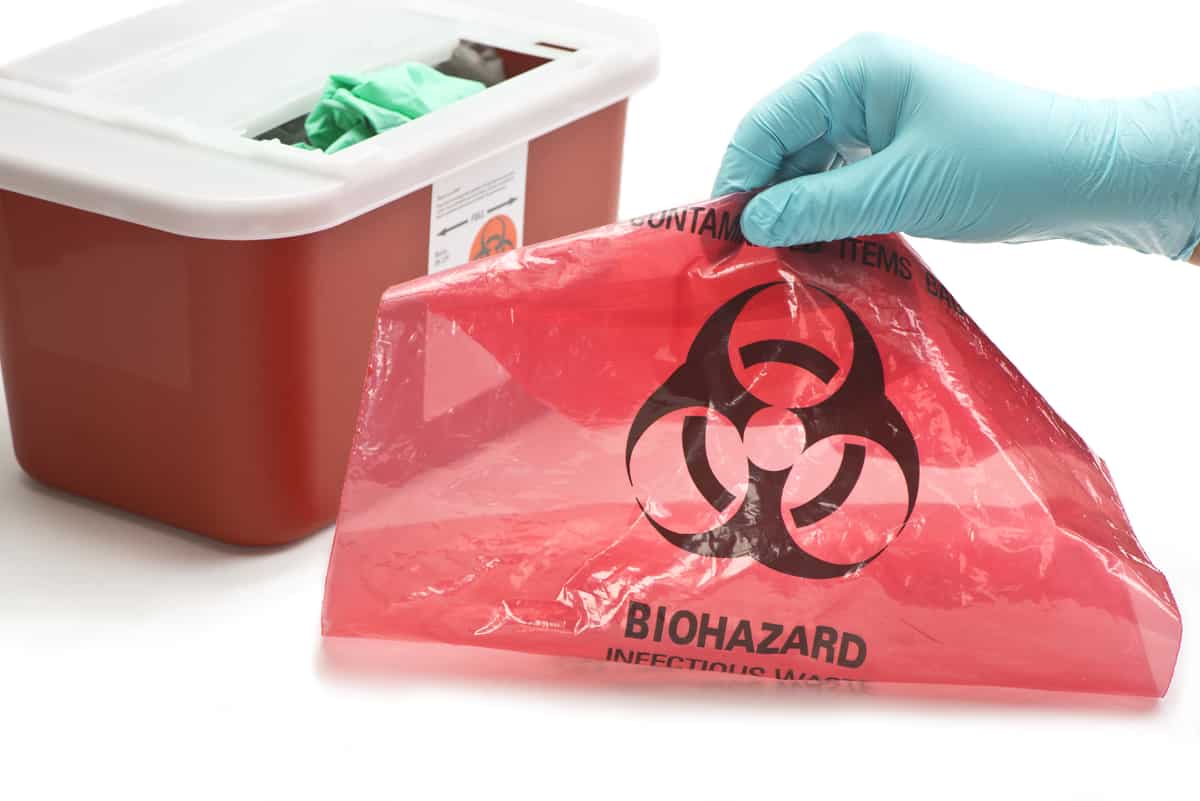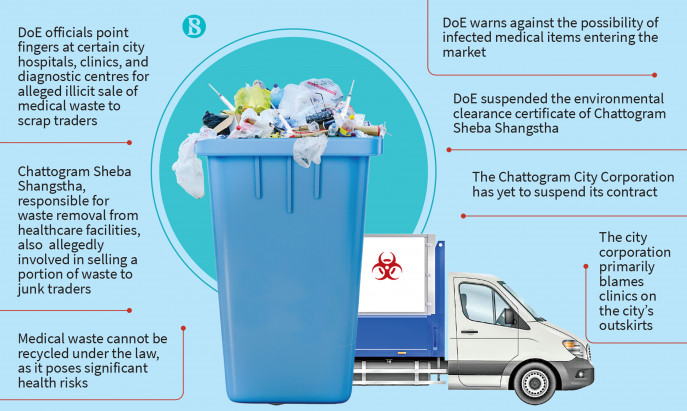Safeguarding Wellness: Expert Medical Waste Removal Services for a Clean Atmosphere
Keep Ahead of Rules: Expert Guidance on Medical Waste Disposal
In a globe where the healthcare sector is frequently advancing, it is vital for medical facilities to stay ahead of regulations when it comes to the proper disposal of clinical waste. From understanding the different categories of clinical waste to carrying out the best collection and partition techniques, this conversation will provide useful understandings and workable suggestions to aid facilities remain in advance of regulations in the ever-changing landscape of clinical waste disposal.
Understanding Medical Waste Categories
Recognizing medical waste groups is vital for correct disposal and management in medical care facilities. Medical waste describes any type of waste generated by medical care activities that may posture a threat to public health and wellness or the setting. It is vital to classify medical waste precisely to guarantee its safe handling, transportation, therapy, and disposal.
There are numerous categories of medical waste that health care centers require to be familiar with. The most typical categories include transmittable waste, pathological waste, sharps waste, pharmaceutical waste, and chemical waste. Each category has particular standards and regulations for its appropriate monitoring and disposal.
Pathological waste refers to human tissues, organs, or body parts that require special handling and disposal. Drug waste consists of run out, unused, or polluted drugs that need careful handling and disposal.
Remaining Up-To-Date With Regulatory Modifications
Staying current with regulatory adjustments is essential for healthcare centers to ensure conformity and correct administration of medical waste disposal. medical waste removal. With regulations frequently progressing, it is necessary for health care facilities to remain current to prevent penalties, penalties, and possible damage to the environment and public health
To remain ahead of regulatory adjustments, medical care facilities ought to establish a system for surveillance and monitoring updates. This can be done by signing up for regulatory e-newsletters, participating in workshops and meetings, and actively participating in market associations. Furthermore, facilities must designate a personnel or group responsible for remaining notified and sharing info to relevant stakeholders.
Normal communication with regulative agencies is additionally essential. Healthcare centers must establish partnerships with local, state, and government agencies to ensure they recognize any type of changes in laws that might influence their waste administration practices. This can be done with routine conferences, engagement in public comment durations, and aggressive involvement with regulatory firms.
Additionally, healthcare facilities should think about partnering with waste administration companies that focus on clinical waste disposal (medical waste disposal services with WasteX). These firms are often well-versed in the current laws and can provide assistance and support to make sure conformity
Carrying Out Correct Collection and Partition Approaches
To properly take care of clinical garbage disposal, medical care centers have to develop correct collection and partition techniques in conformity with regulative guidelines. Executing these techniques guarantees the safe handling and disposal of potentially hazardous products, shields the setting, and decreases the threat of injuries and infections to health care employees and the public.
Proper collection and segregation methods entail the usage of assigned containers and identifying systems. Health care facilities ought to offer clearly classified containers for various kinds of clinical waste, such as sharps, transmittable waste, pharmaceutical waste, and non-hazardous waste. These containers need to be color-coded and clearly significant to stay clear of complication and advertise simple identification.
Additionally, healthcare centers must train their personnel on the appropriate procedures for collecting and segregating medical waste. This consists of educating them on the various sorts of waste, the proper containers to make use of, and the importance of adhering to standards and regulations. Normal training sessions and correspondence course must be conducted to make sure that personnel remain updated on best methods.
Additionally, medical care facilities must establish a system for routine collection and disposal of clinical waste. This may include partnering with licensed waste monitoring companies that concentrate on medical waste disposal. These firms will make sure that the collected waste is moved and taken care of in compliance with regulative needs.
Selecting the Right Disposal Techniques

Incineration is one of the most efficient and typical techniques for taking care of particular sorts of clinical waste, such as pathological waste and sharps. It entails the controlled combustion of waste at high temperatures, decreasing it to ash. Incineration can release damaging contaminants right into the air and add to air medical waste disposal services with WasteX pollution.

Chemical treatment includes the use of chemicals to counteract the waste and decontaminate. Microwave therapy makes use of microwave power to warmth and decontaminate the waste.
Ensuring Compliance Through Documentation and Training
After carefully considering the suitable disposal techniques for clinical waste, medical care centers need to make certain conformity with regulations and minimize environmental impact by executing efficient documentation and training procedures. This action is critical in keeping a sustainable and safe environment for both medical care employees and the public.

Training is just as important in guaranteeing conformity with laws. Healthcare workers who manage clinical waste should receive suitable training on waste partition, taking care of, and disposal treatments. This training should cover topics such as the appropriate use individual safety tools, identification of different sorts of waste, and the correct disposal methods for each and every waste category. By offering thorough training, visit their website medical care facilities can empower their personnel to make enlightened decisions and lessen the threat of improper waste disposal.
Conclusion
Finally, remaining ahead of regulations in medical garbage disposal is essential for medical care facilities. medical waste removal near me. Recognizing the various classifications of clinical waste, staying upgraded with governing modifications, carrying out correct collection and partition techniques, selecting the suitable disposal techniques, and ensuring compliance via documentation and training are all essential steps. By adhering to these standards, health care companies can successfully dispose and handle of clinical waste in a risk-free and responsible fashion
From recognizing the different groups of medical waste to applying the ideal collection and partition techniques, this conversation will provide useful insights and actionable tips to help centers stay ahead of laws in the ever-changing landscape of medical waste disposal. - medical waste disposal services with WasteX
The most common categories include contagious waste, pathological waste, sharps waste, pharmaceutical waste, and chemical waste. Health care centers should provide clearly labeled containers for different types of medical waste, such as sharps, contagious waste, pharmaceutical waste, and non-hazardous waste. Healthcare facilities should establish an extensive system to tape-record and track all elements of medical waste disposal, including types of waste produced, quantities, and disposal methods used. Healthcare workers who deal with medical waste should receive ideal training on waste partition, handling, and disposal treatments.